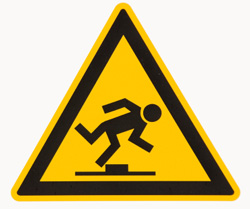OSHA and Occupational Safety & Health Careers

In the U.S., the federal agency which provides industry-specific guidelines for workplace safety is known as the Occupational Safety and Health Administration (OSHA). As an agency within the Department of Labor, this organization is your #1 source for information on how to protect workers and other people in the workplace. Please see this detailed overview of OSHA.
The workplace safety environment is also improved by the outreach of other organizations. These organizations specialize in advocacy and training to assist employers in meeting federal safety standards--the National Safety Council, the National Fire Protection Association, the Board of Certified Safety Professionals, and the American Industrial Hygiene Association. In each industry, there are organizations and agencies that provide safety guidance for their professionals. For example, in 2005, Congress passed the Patient Safety and Quality Improvement Act which established Patient Safety Organizations to improve healthcare services for patients around the country.
Safety professionals help employers to create a safer environment for American workers by enforcing federal requirements. They recommend safety, training, protective equipment, management controls, and reporting mechanisms in a general safety culture. When safety professionals help the employer to be vigilant, the likelihood for fines associated with OSHA non-compliance is reduced.
To consider a rewarding career in workplace safety, there are several career paths to choose. You can plan your preparation for a service career such as firefighting, public safety, healthcare, industrial mitigation, or engineering, or you can specialize in safety practices. Not all safety professions require a college degree, but they do require industry-specific knowledge about compliance with federal, state, and local safety codes. Industrial safety technicians, industrial hygienists, and safety training and development managers assist organizations in meeting or exceeding safety standards. Training is one of the most important tools for preventing workplace injuries.
OSHA Technician Careers
According to the U.S Bureau of Labor Statistics (BLS), an occupational health and safety technician may begin this profession with an associate's degree or certificate. This postsecondary training builds on earlier preparation in sciences, math, and English. Coursework is a foundation reinforced later by on-the-job training in safety rules and practices. In May 2008, the OHS technician earned an average median salary of $45,360, says BLS.
Industrial Hygienist
Another great career for people who like to make the workplace safer is the industrial hygienist. The American Board of Industrial Hygiene (ABIH) notes any individual can claim the title of industrial hygienist. ABIH offers two programs that address the needs of people with variations in education and experience. You can obtain voluntary certification by demonstrating education and experience and passing a test for the Certified Industrial Hygienist (CIH) or the Certified Associate Industrial Hygienist (CAIH). Topics on the test for the CIH include subjects like--Biohazards, Engineering Controls/Ventilation, Health Risk Analysis & Hazard Communication, Noise, Radiation, and Toxicology. That means a person could transition from another career such as firefighter or HVAC technician to industrial hygiene after increasing his knowledge in the subjects covered on the professional test.
Safety Program Managers
A third career involves managing the training and development needs of all personnel. According to BLS, the median annual wage of training and development managers were $87,700 in May 2008. This position may require a bachelor's degree or higher, BLS says, and an advanced degree for some jobs. The typical college coursework will include courses in human resources, training and development, business, and organizational theory. Some training and development managers do move into their management jobs after acquiring years of HR experience.
Moving into management of safety programs raises your salary prospects significantly, especially when you consider the difference between the salary for managers and technicians is more than $40,000 (see above). This type of profession requires knowledge of safety practices, training, human resources, management, and professional development. Some professionals gravitate more towards paperwork, information management, and program analysis; others prefer to find a position that involves substantial interaction with employees and managers in training delivery models.
The safety training manager can build his/her skills by increasing knowledge of occupational safety. The organization needs employees who know the OSHA requirements in each work process. It is the manager's job to decide how to create training programs that will help employees acquire a working knowledge of job-specific OSHA requirements. The manager serves also as a vital contact for OSHA. Together, OSHA and safety managers increase the safety culture in the American workplaces.
Workplace safety brings together professionals from every career field. If you want to help the workers in your company maintain a safe working environment and prevent accidental injuries and deaths, one of the work safety careers discussed above might be right for you.



